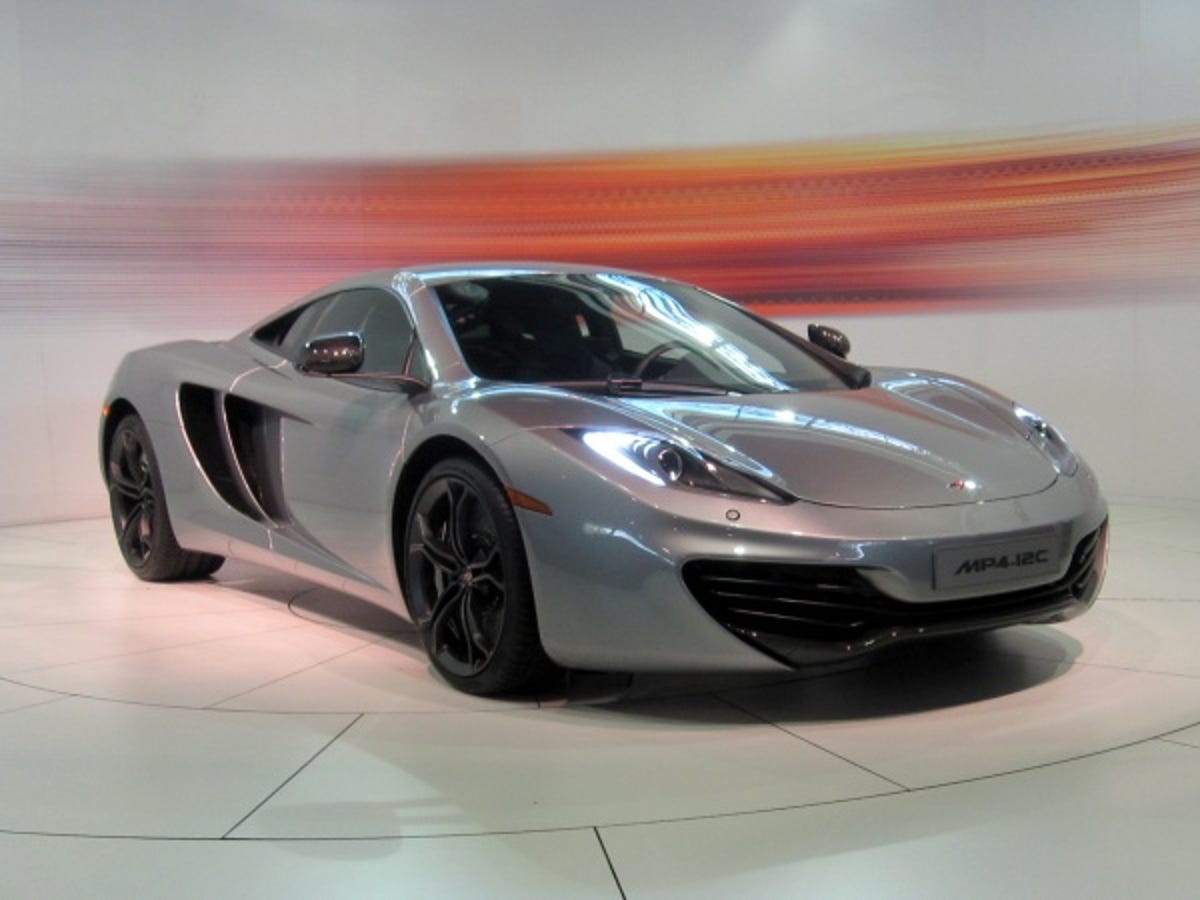McLaren MP4-12C hands on
McLaren is back with its first in-house supercar in over a decade. We take a look outside, inside and, even, under the successor to the legendary F1.

Back to the future
McLaren is back with its first in-house supercar in over a decade. We take a look outside, inside and, even, under the successor to the legendary F1.
McLaren's first production car in over 10 years heralds the company's return to series manufacturing. The MP4-12C will be built at a new plant in Woking, UK, with production pegged at about 1000 per year.
In the UK prices will start from £125,000 (AU$200,000), while in the US they're expected to go from US$225,000 (AU$225,000).
A brief history
McLaren's most recent road car was a collaboration with Mercedes-Benz, the McLaren SLR. For the follow up to that car, the SLS AMG, Mercedes-Benz turned to its in-house tuner, AMG.
According to McLaren, the MP4-12C is built on the racing technology and knowledge gained by decades the company has spent building winning race cars.
Four seconds
With a body made from carbon fibre, aluminium and magnesium, as well as plastic panels, the MP4-12C boasts a dry weight of only 1300kg. Couple that low weight with a twin-turbo 3.8-litre V8 making 447kW of power and 600Nm of torque, and McLaren's projected zero to 100km/h time of under four seconds seems like a safe bet.
Brake and steer
Ceramic brakes are an option on the MP4-12C. These big disc brakes, 370mm in front and 340mm at the rear, are manufactured by Brembo for McLaren. Rather than using a limited-slip differential, the MP4-12C uses a technology called brake steering to help it negotiate turns. When going through a corner at pace, the brakes pulse the inside rear wheel for better rotation.
Brakes as light as air
McLaren says the rear spoiler, inset just behind the engine cover, does not need any automatic trim function to adjust downforce, as it is optimally designed. However, it will work as an air brake under heavy braking, flipping up almost instantaneously to help slow the car.
Engine outsourcing
The engine sits under a transparent cover in the rear. At only 3.8 litres, this twin-turbo V8 redlines at 8500rpm and produces its peak power output of 447kW at 7000rpm. The engine is built by Ricardo, an engineering company, with specifications provided by McLaren.
Doors to a new climate
Intended as a road-going supercar, the MP4-12C offers many amenities not found on race cars. The doors open out and up, and we found it necessary to duck underneath them to get into the car. Climate controls for each air conditioning zone are set into the door handles.
Fire in the hole!
Under the bonnet is a reasonable amount of luggage space, enough to fit a couple of 50cm (20-inch) roller bags. The fire extinguisher, seen above, is an optional extra.
Buckets of love
The seats in the MP4-12C were well padded and bolstered, covered in thick leather and surprisingly comfortable. Likewise, we found plenty of leg and head room in the MP4-12C's cabin.
Shifty
McLaren says the steering wheel, pedals and seat are all perfectly aligned, which is not always the case in the compact confines of a supercar. As the transmission is a seven-speed F1-style sequential gearbox, there is no clutch pedal or even a shifter on the console. Rather, shift paddles sit behind the steering wheel.
Race-style
The entire instrument cluster is an LCD display. In true race car style, the tachometer dominates the arrangement and is sited in the centre, with a digital readout for ground speed in the dial's bottom right corner.
Modes for motion
Transmission buttons (forward, neutral and reverse) run down the console, behind the electronic parking brake lever.
Open your eyes
Near the top of the narrow centre console, McLaren has come up with a unique and usable design for what it calls the IRIS system. This entertainment and nav system uses an 80GB hard drive for navigation, and has iPod and Bluetooth support. The stereo set-up is provided by high-end audio company Meridian.
Moody
These buttons below the navigation system adjust the car's drive modes. The dial on the left can go from normal to sport to track. To operate it, the driver must turn the dial, then push the Active button in the centre. The car also includes launch control and a winter mode.
Naked, part I
McLaren also put an uncovered MP4-12C chassis on display. This chassis shows the carbon fibre tub of the car, which is strong enough to be the car's main structural element. Aluminium suspension pieces are bolted to the front and rear of the tub. This design allows damaged parts to be quickly replaced — another useful lesson from racing.
Naked, part II
The seven-speed gearbox sits behind the engine. It has a pre-cog function, letting the driver quickly touch a paddle to set the transmission for an up or down shift. The exhaust pipes are also designed to expel its gasses high up on the rear of the car, eliminating the potential for aerodynamic problems with exhaust being channelled near the car's underbody.
McLaren F1
The F1 was McLaren's earlier production car. Despite its near legendary status, the car wasn't exactly a sales success, with only 106 being built between 1991 and 1998. It was the world's fastest production car until 2005 and remains the fastest naturally aspirated production car in the world.

